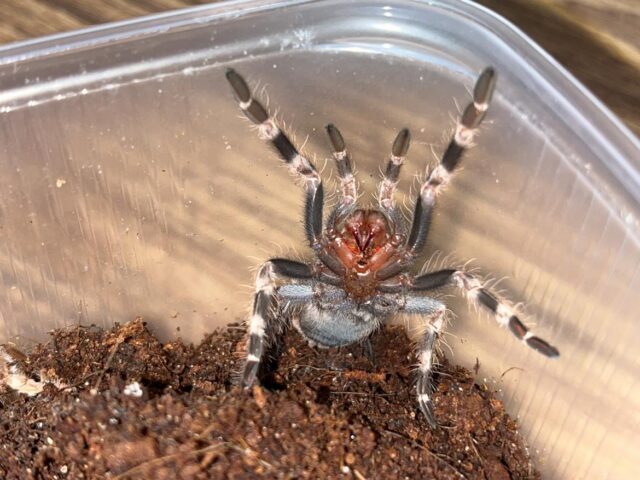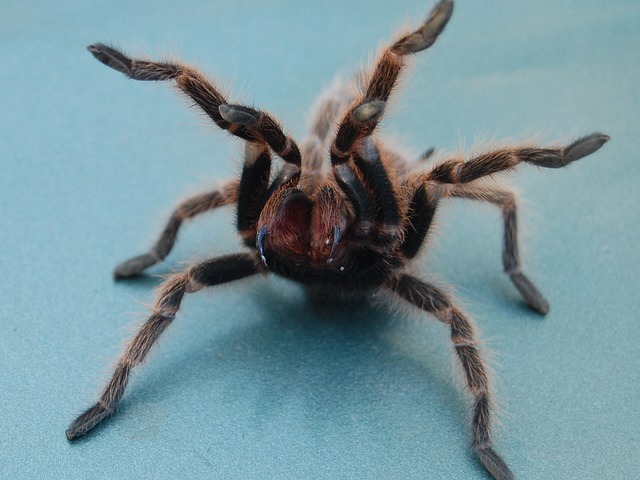Tarantulas are fascinating creatures, known for their thick, hairy bodies and large size. One of the most striking behaviors these spiders display is the threat pose. This defensive stance involves raising their pedipalps and front legs to show off their fangs.
It occurs when they feel threatened or cornered. From a calm signal of lifting just one leg to full-on display of fangs, tarantulas try to look fierce only when necessary. They use this posture as a way to defend themselves and communicate danger to predators or humans who get too close.
Understanding why tarantulas take on this threatening appearance is key to safely handling them or sharing space with them in the wild. The pose serves as a clear warning: “Back off before things escalate.” By respecting this message, we can avoid unwanted meetings with these misunderstood arachnids who’d rather not fight if given the choice.
Ready? Let’s learn more about what prompts a tarantula to strike such an intimidating pose and how we can respond appropriately.
Understanding Tarantula Threat Posture
Tarantulas show a threat posture when they feel in danger. This stance warns others to stay away or face their sharp teeth and strong legs.
Definition and triggers
Tarantulas show a threat posture to protect themselves. They raise their pedipalps and front legs, showing fangs when scared or annoyed. This pose means they might attack if pushed further.
Things like sudden moves or getting too close can trigger this stance. It’s how they say, “Back off!” without making a sound.
Understanding tarantula behavior is key to coexisting with these fascinating creatures.
Scenarios leading to this behavior include someone trying to pick them up without caution, a pet coming near them, or even just moving too quickly around them. These actions make the spider feel threatened, leading it to defend itself in such an impressive way.
Recognizing these signs helps avoid any harm while handling or being near tarantulas.
Common scenarios leading to this behavior
Tarantulas show their threat posture for specific reasons. It’s their way to communicate discomfort or fear. Here are some common scenarios:
- A human gets too close, making the spider feel trapped.
- Another animal tries to attack or threaten the tarantula.
- During feeding times, fast movements can scare them.
- Handling them too roughly or without care often triggers this response.
- Vibrations in their environment cause stress.
- Sudden changes in lighting or shadow over them can be seen as a threat.
- Protecting their territory from intruders prompts the display.
- When they’re about to shed their skin, they feel vulnerable and might take a defensive stance more quickly.
Each scenario shows a clear need for safety and communication from the tarantula’s perspective.
Visual Characteristics of the Threat Posture

Threat posture of a juvenile N. chromatus
When a tarantula feels scared or threatened, it does something striking. It stands tall on its back legs and shows off its fangs, ready to defend itself if needed.
Raised front legs
Tarantulas lift their pedipalps and front legs as a clear sign of warning. They do this to look bigger and scarier to whoever is bothering them. This posture shows they are ready to defend themselves if needed.
It’s not just for looks; those raised legs mean they might use their fangs next.
Tarantulas raise their front legs to say, ‘Back off!’
Their legs going up is step one in saying they feel threatened. If something or someone keeps bugging them, those sharp fangs come into play. Seeing a tarantula in this stance means it’s time to give it some space – fast.
Reasons Behind the Threat Posture
Tarantulas show their threat posture for self-protection and to send messages. They lift their front legs and display fangs to scare off danger or tell people to stay back.
Self-defense mechanisms
Tarantulas show their fangs and raise front legs to protect themselves. This pose warns predators and humans to stay back. They lift just one or two legs as a less intense warning, staying relaxed but ready.
If threats continue, they might attack to defend themselves. These actions speak clearly: “I am scared or annoyed.” Understanding this helps avoid harm.
Arachnosupporters know that safe handling is key. They recognize the threat pose as a crucial sign of fear or irritation in tarantulas. This knowledge prevents unwanted confrontations, ensuring both human and spider stay safe.
Respecting these signals makes interactions peaceful and avoids stress for the tarantula.
Communication to predators and humans
Tarantulas wave their pedipalps and front legs, showing off fangs to tell predators and humans to stay back. This clear signal means they feel scared or annoyed. They do this as a last warning before they might decide to bite.
So, seeing a tarantula in such a pose is a sure sign one should not come closer. Humans need to learn this posture for safe handling of these creatures.
Making themselves look bigger and showing teeth works well against both animals that might want to eat them and people who get too close. This behavior helps avoid fights that the tarantula does not want.
It’s their way of saying, “I’m dangerous,” without having to fight every time. This keeps both the spider and others safe from harm.
Final Words From the Tarantula Breeder
The threat pose in most cases is just a display of muscle tension, and a tarantula may bite without prior warning. It is important to observe and test the temperament of each individual, as it can differ from the norms established for the species.
FAQs
What animals eat tarantulas?
Tarantulas have many natural predators, including lizards, birds, and even cats.
What insect can beat a tarantula?
The most well-known predator is the tarantula hawk.







